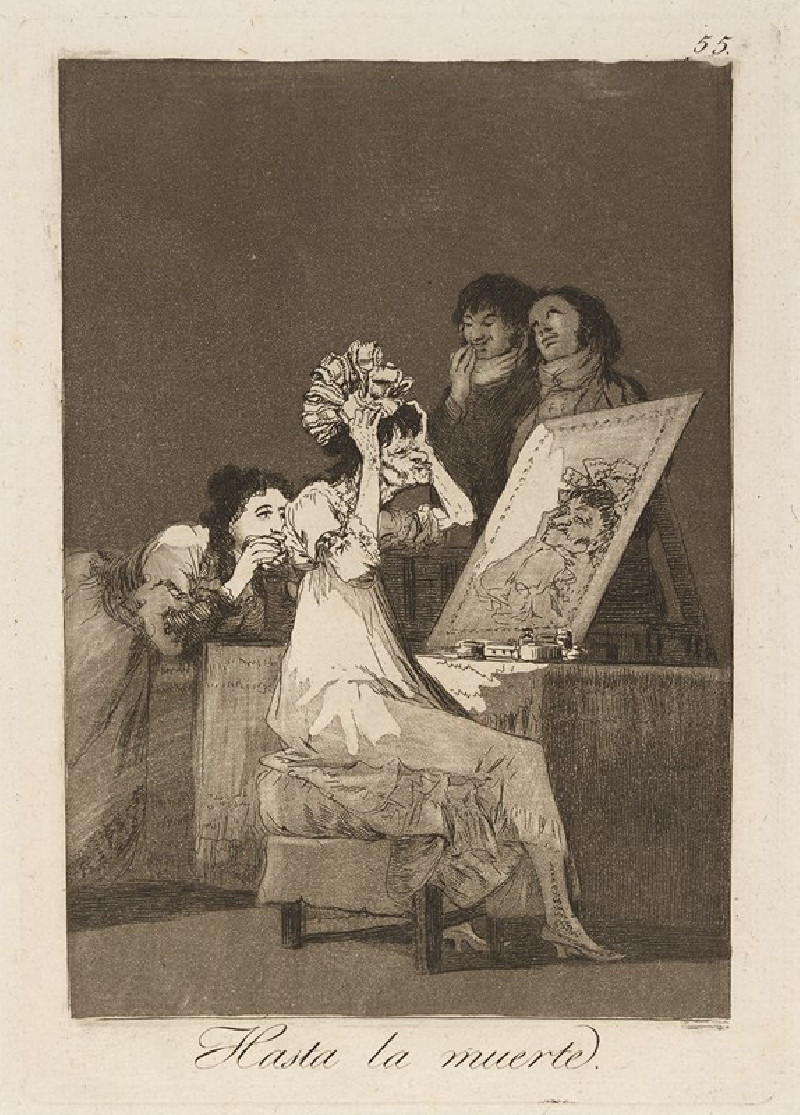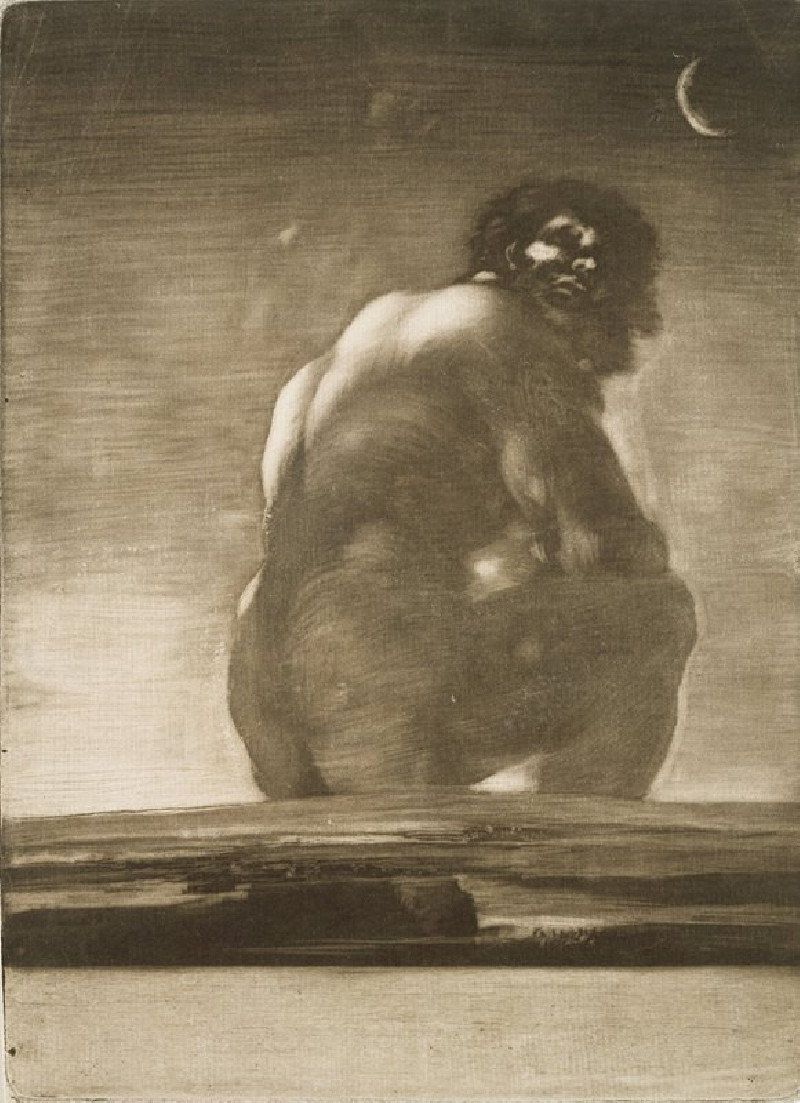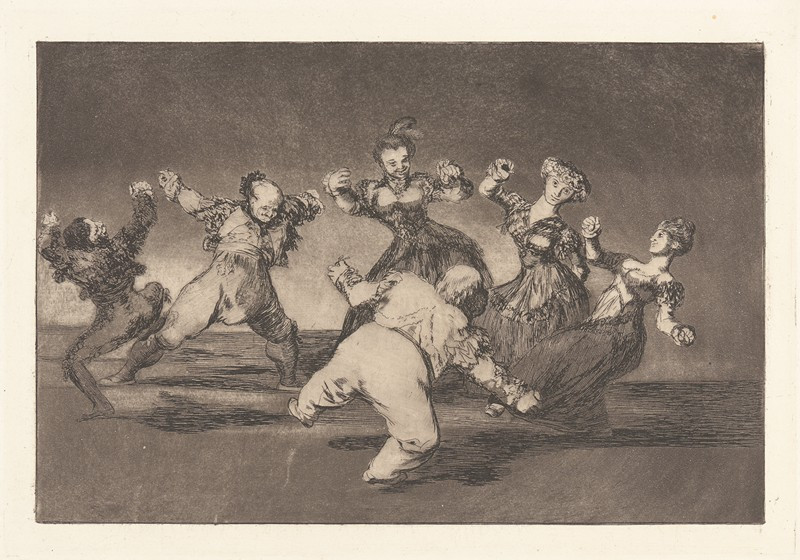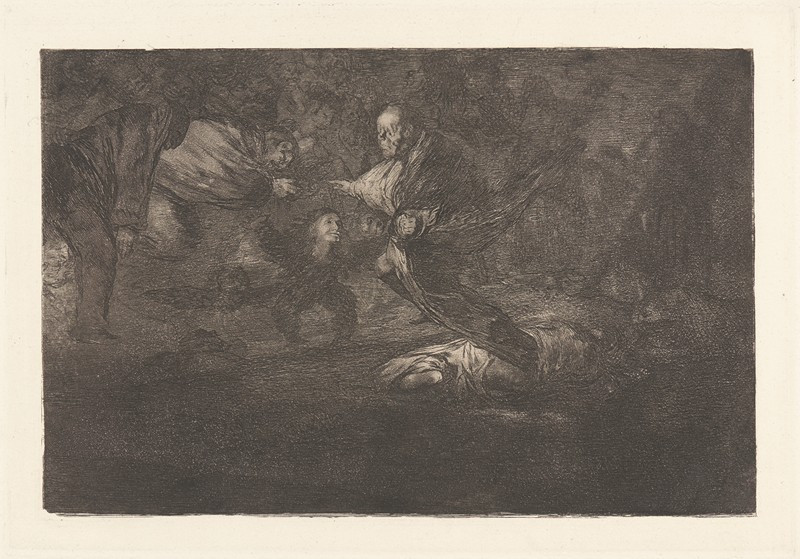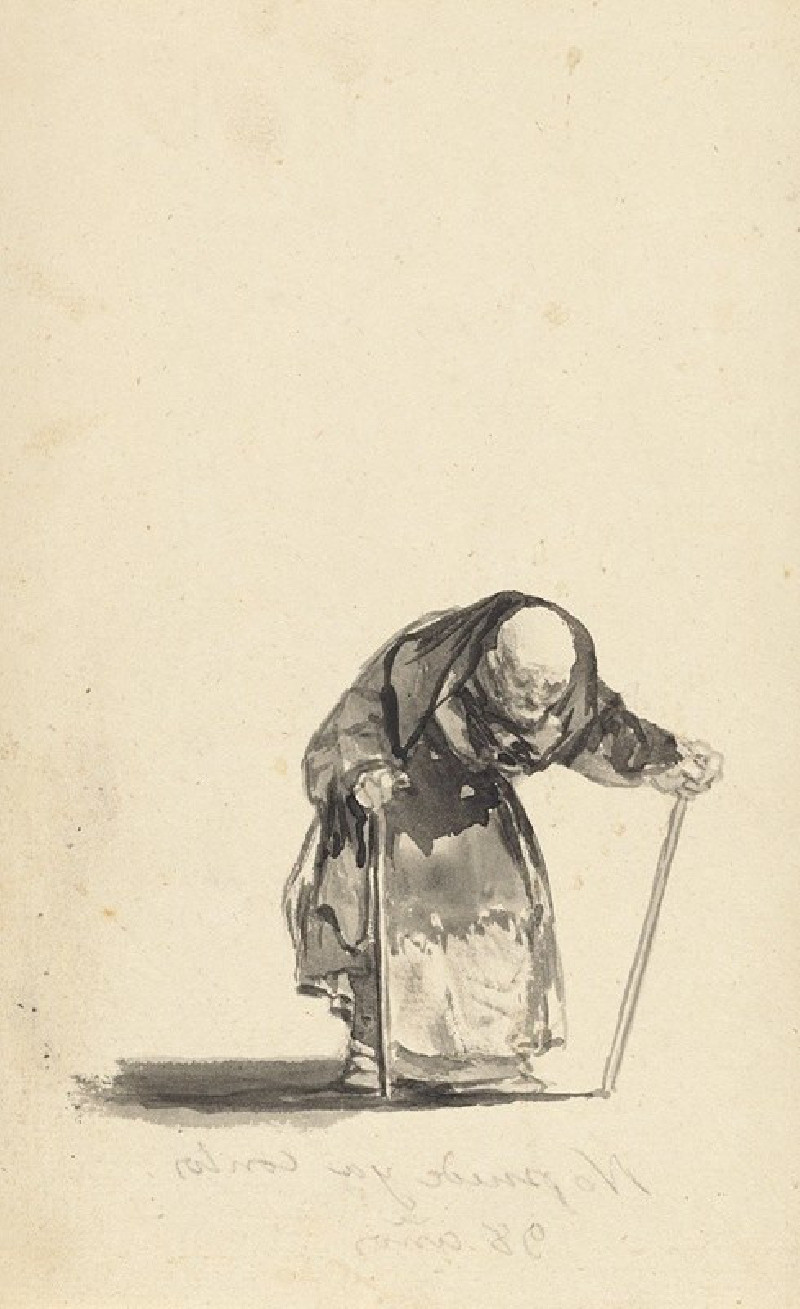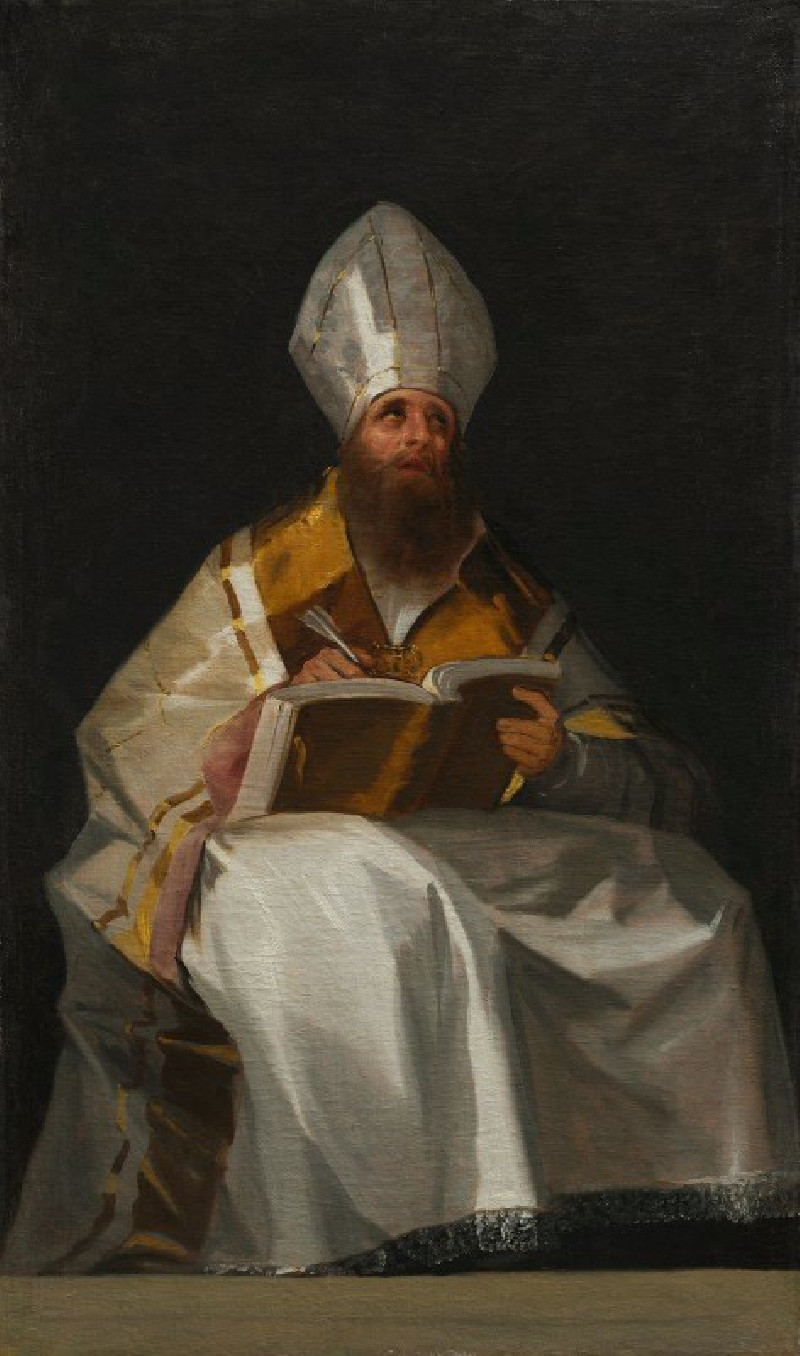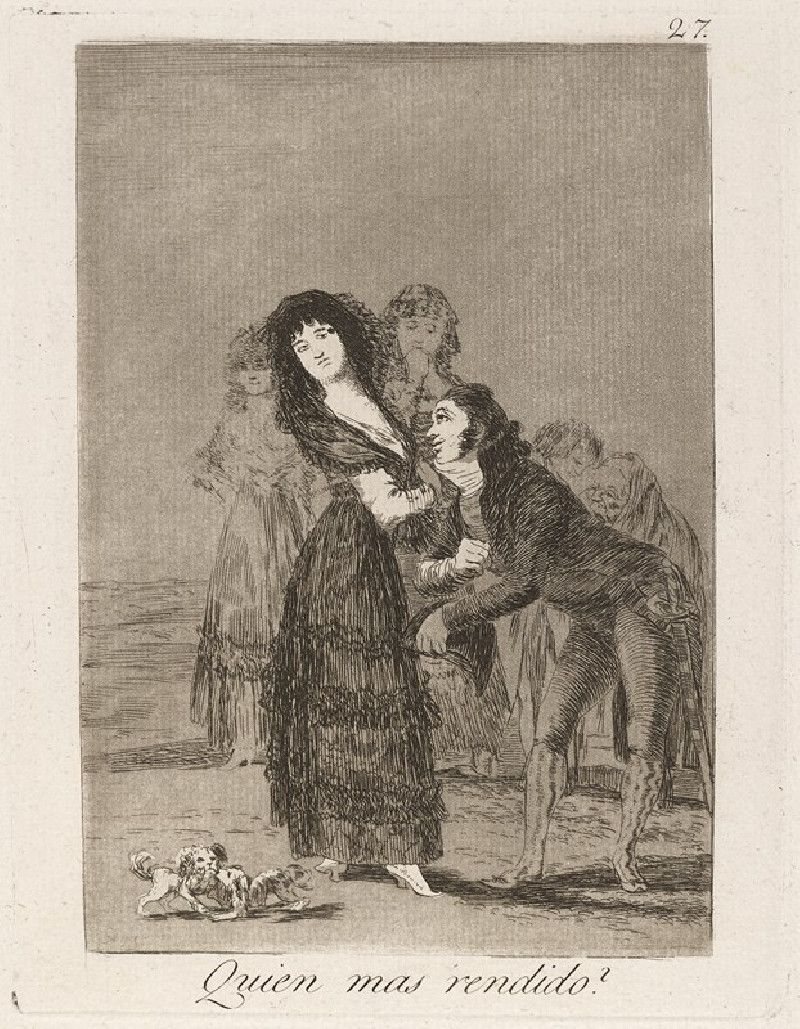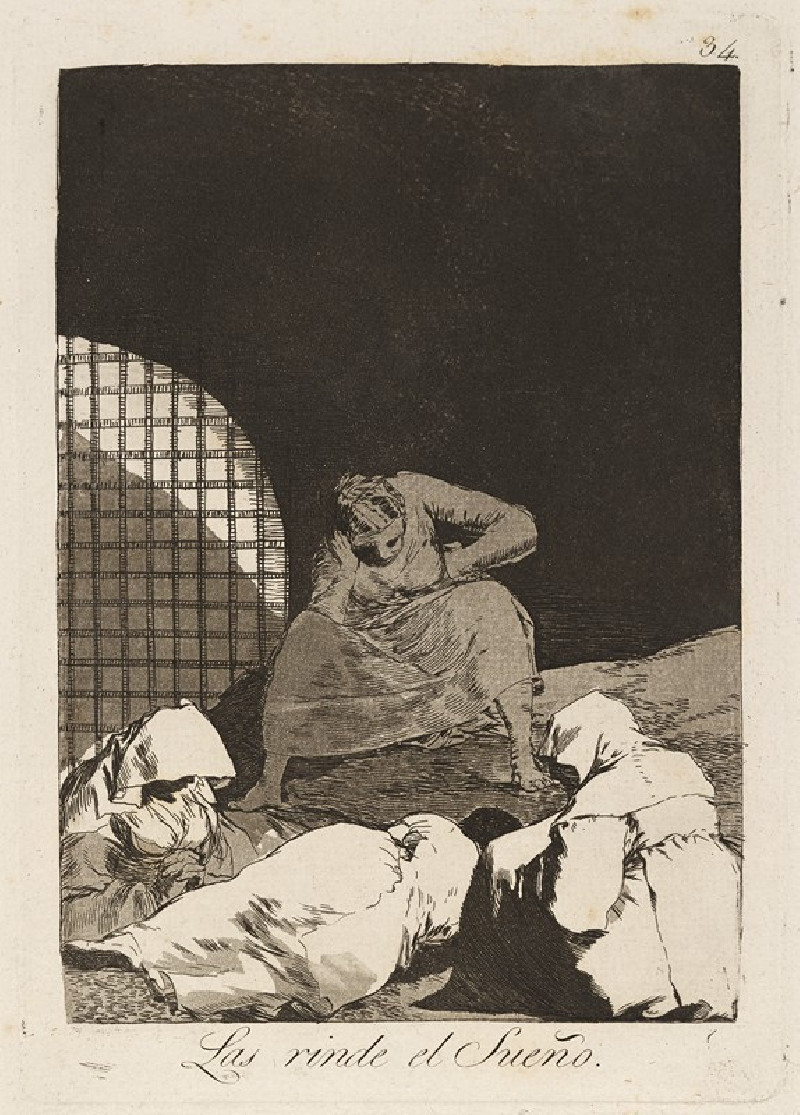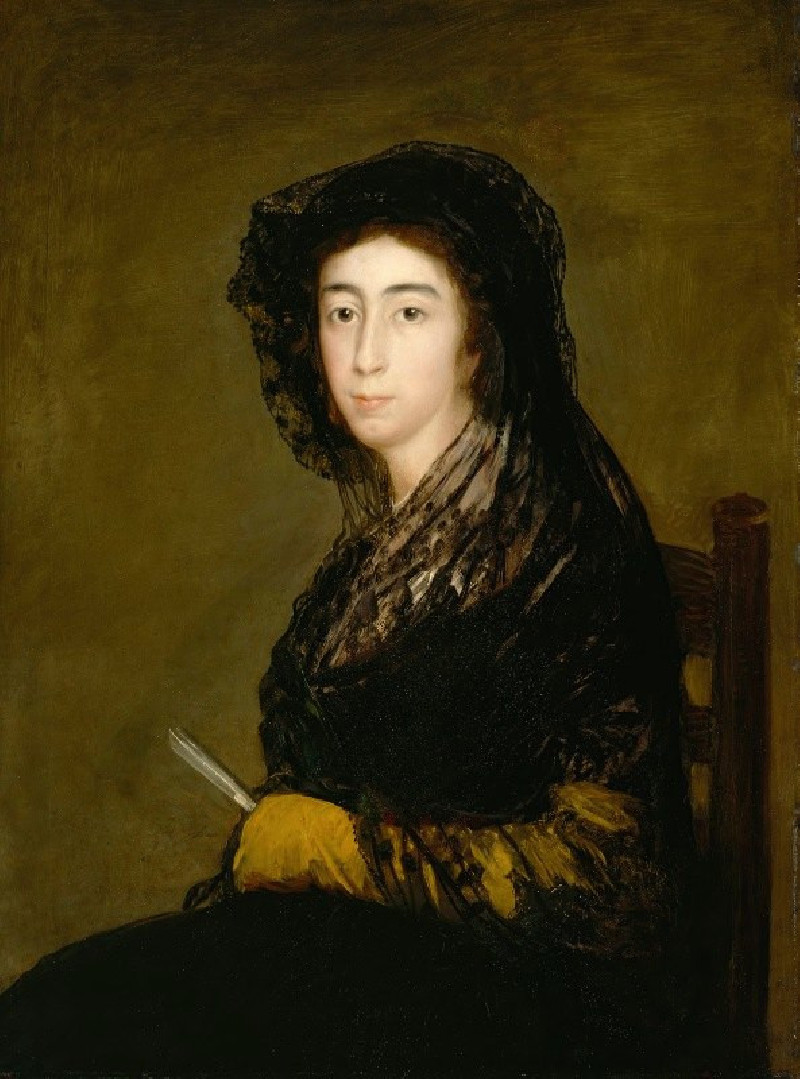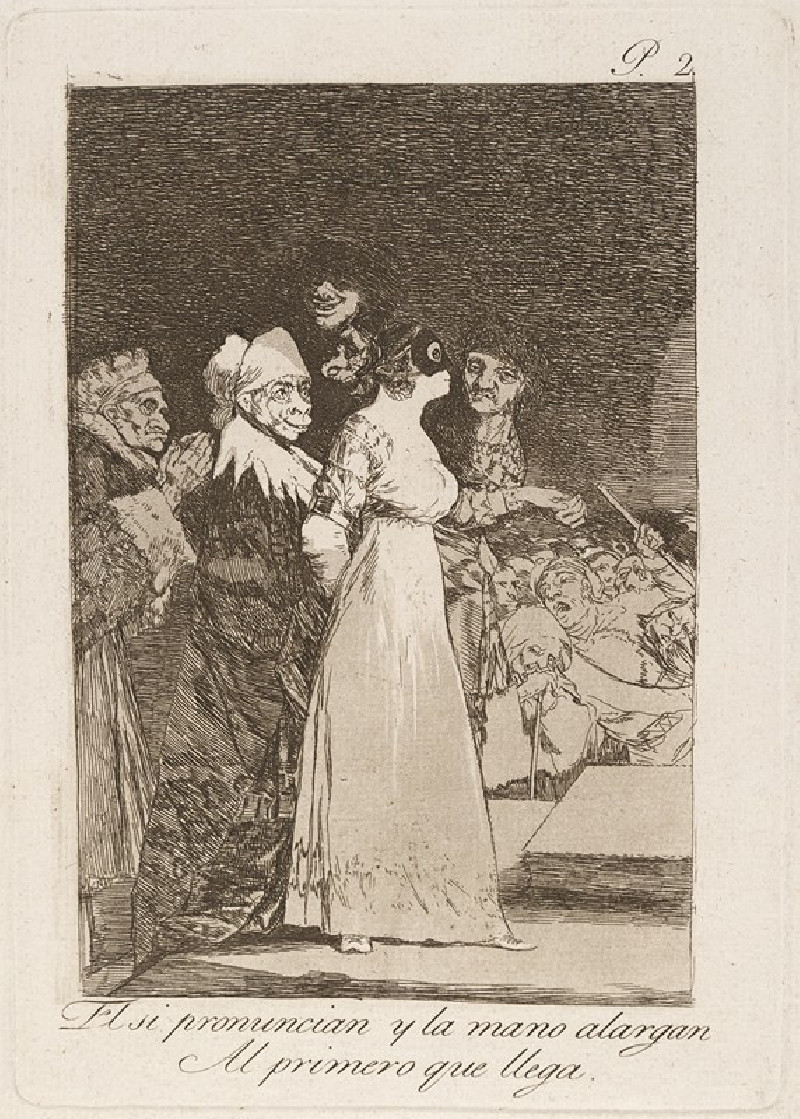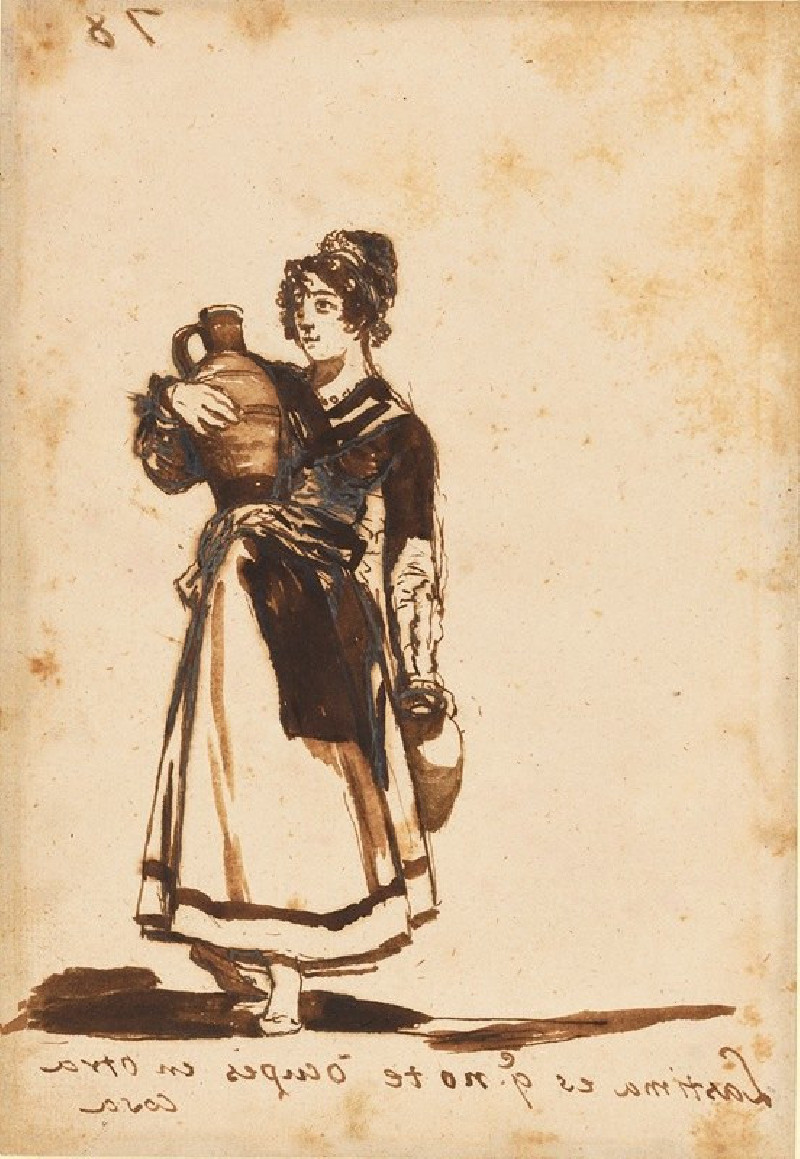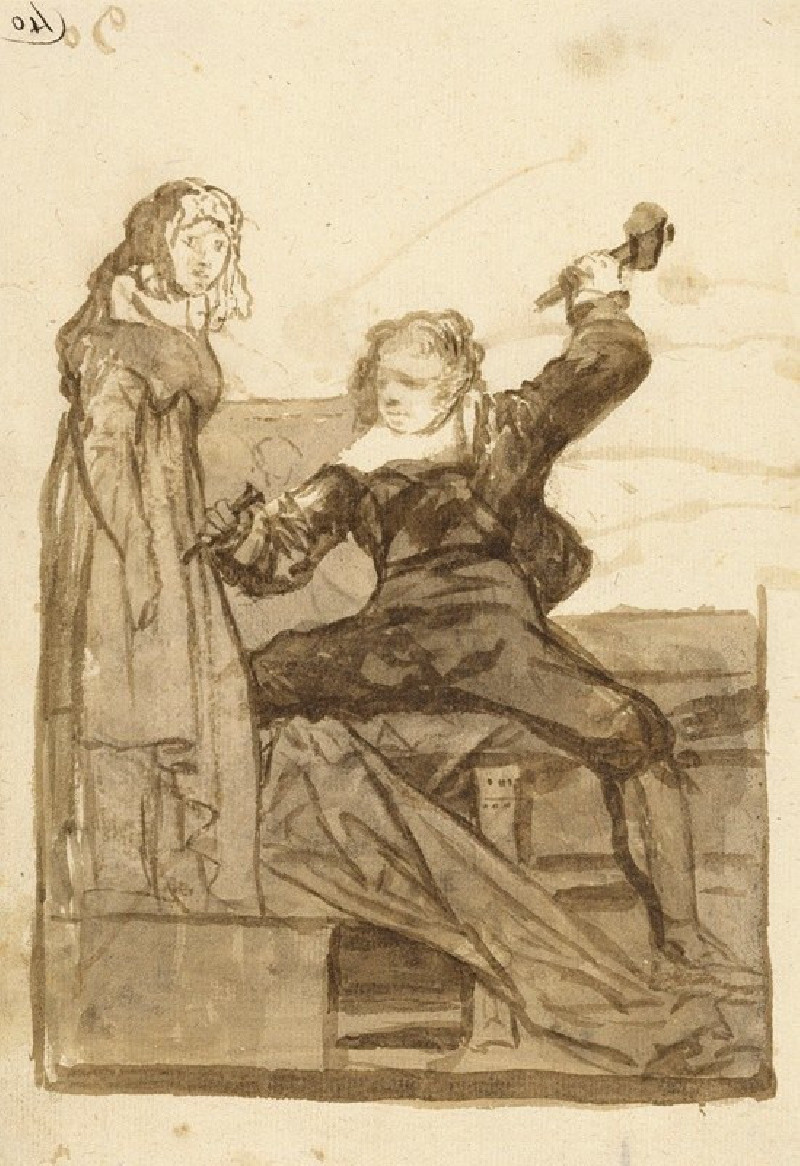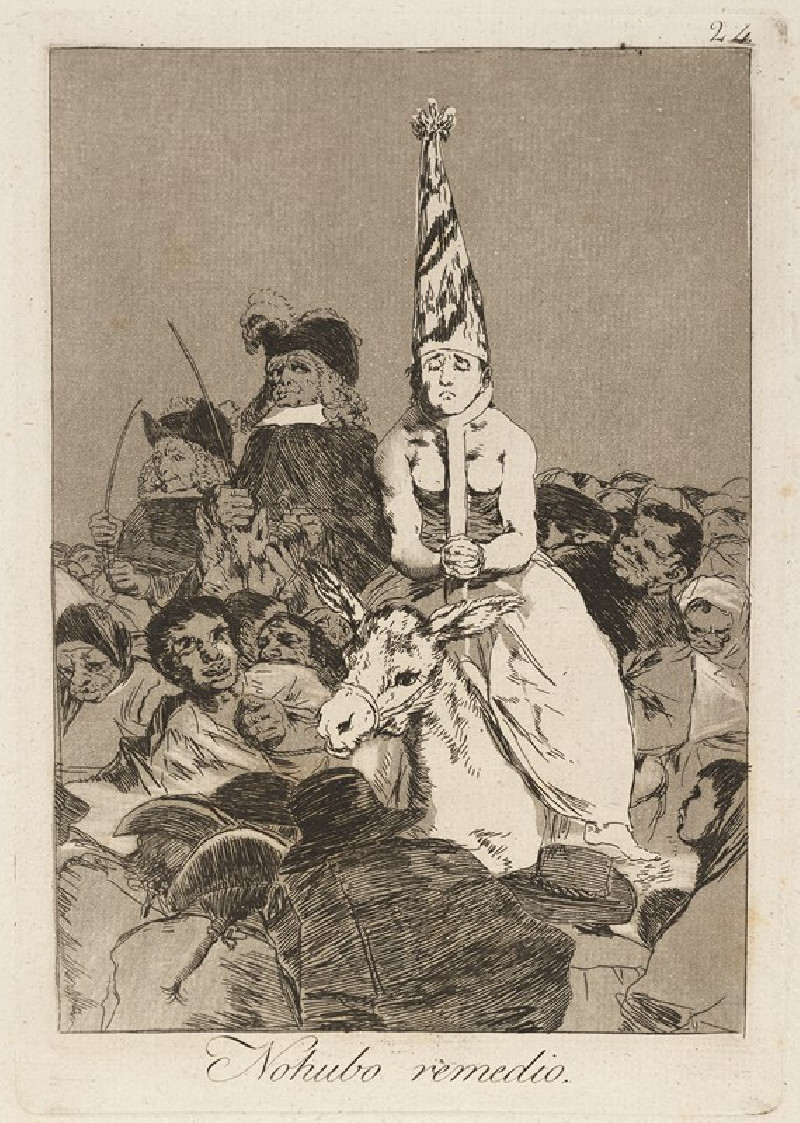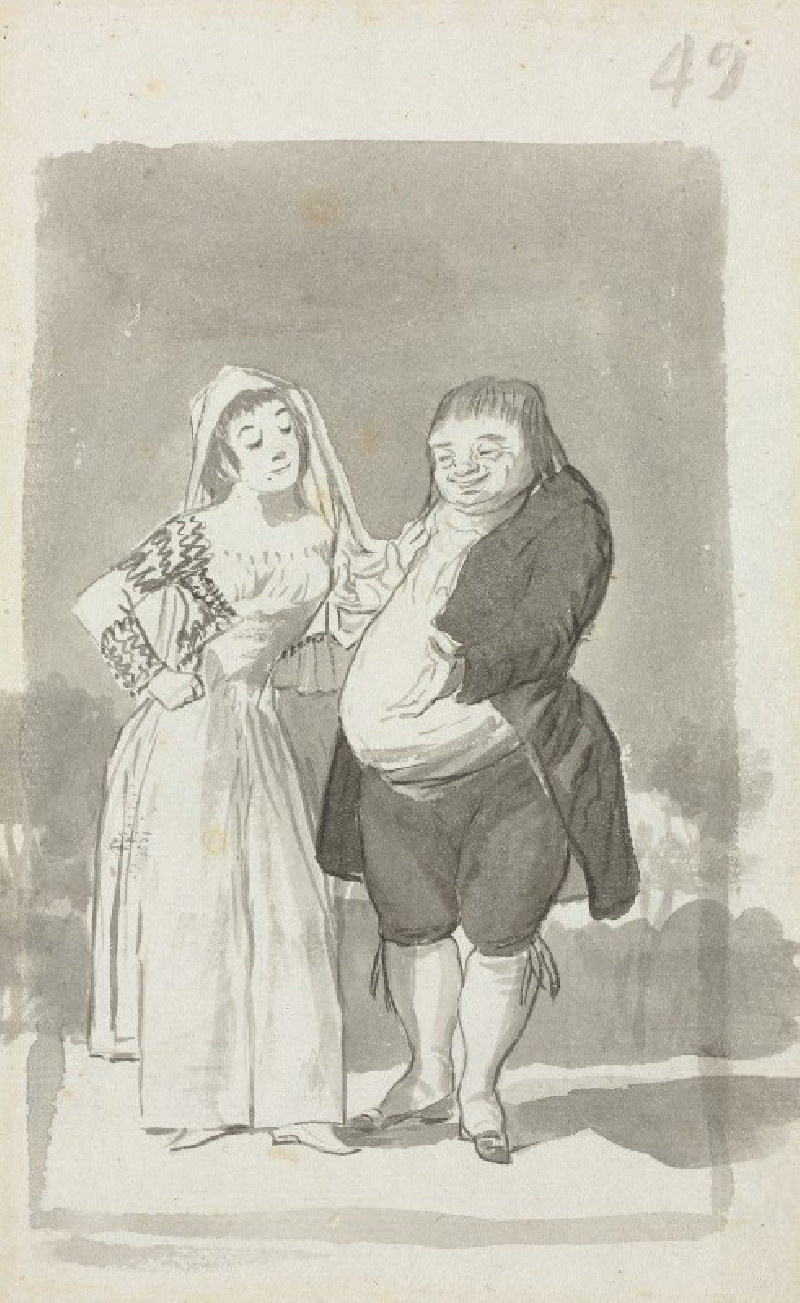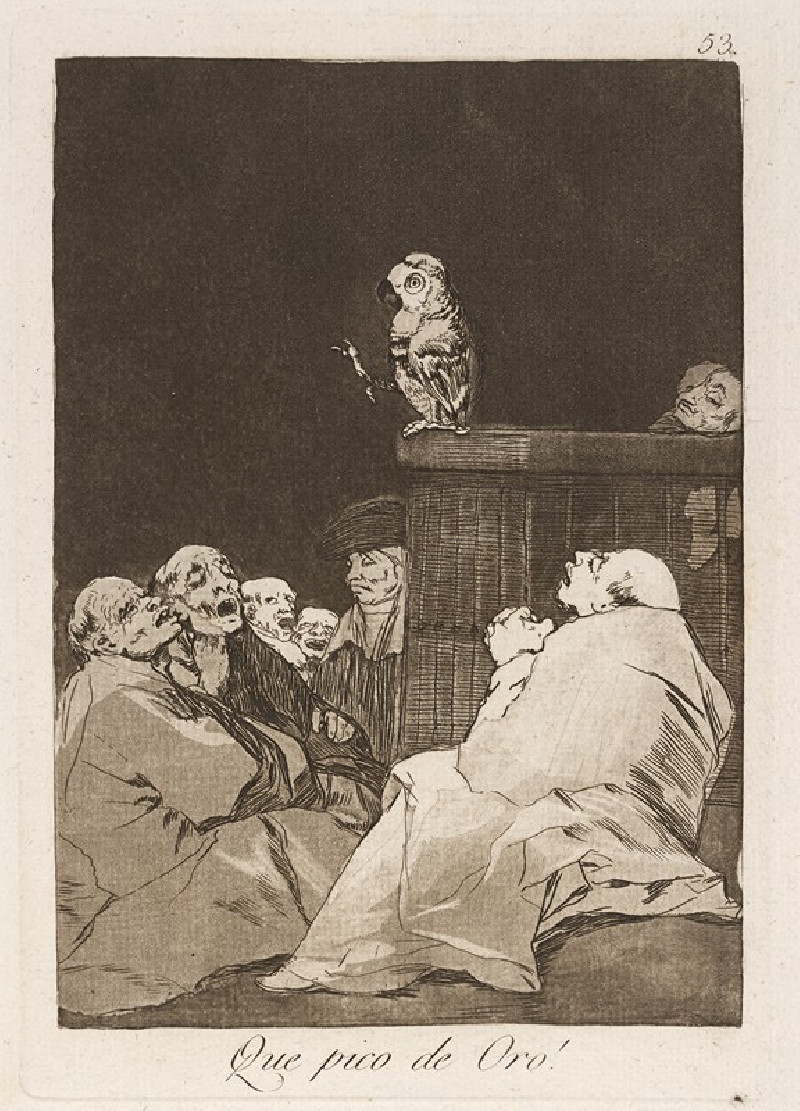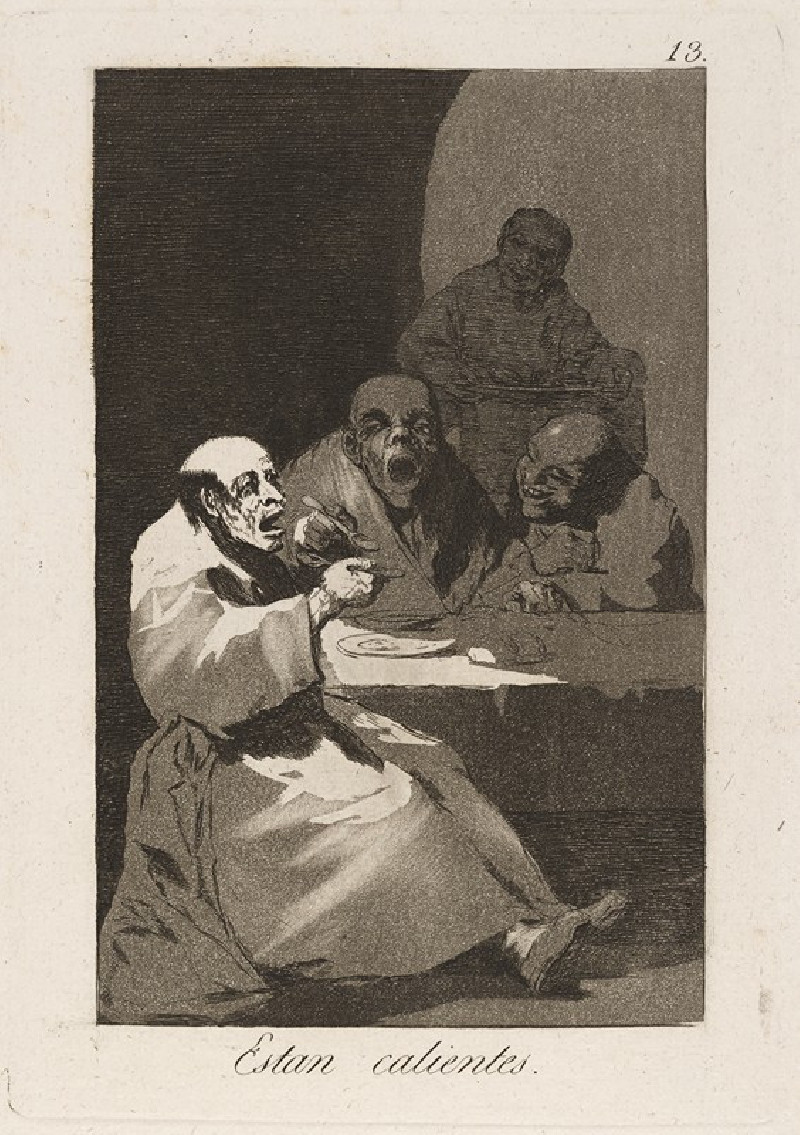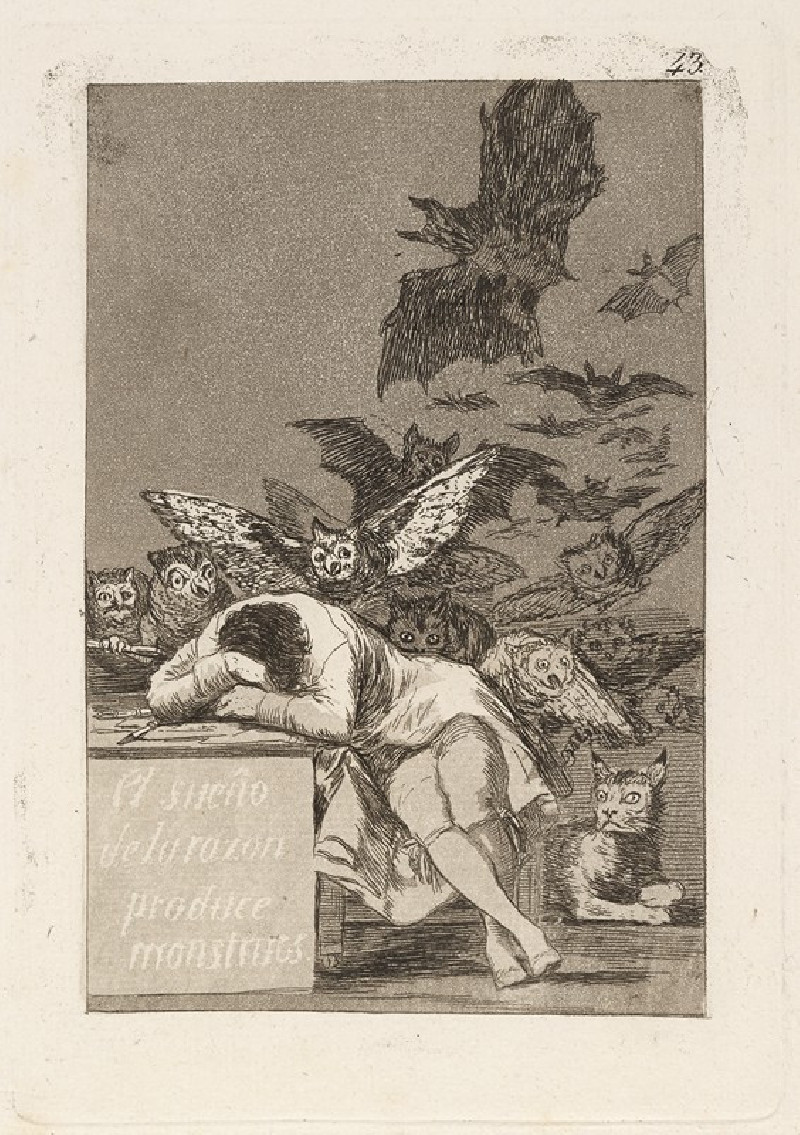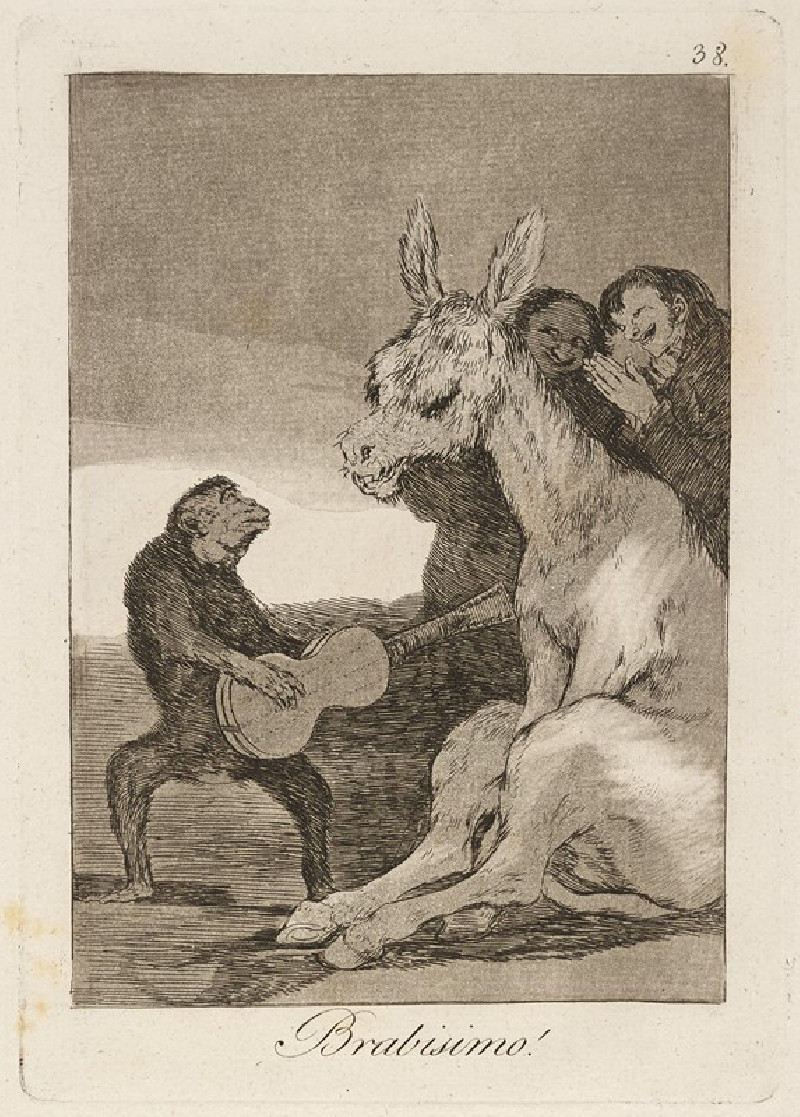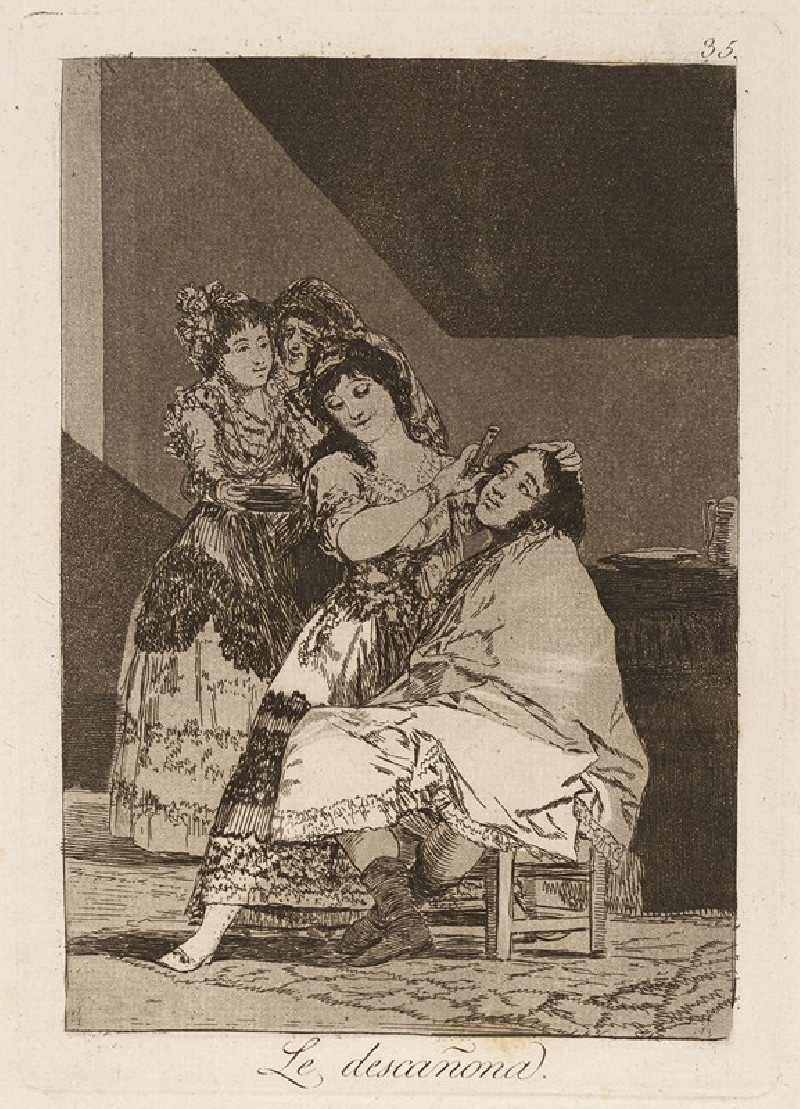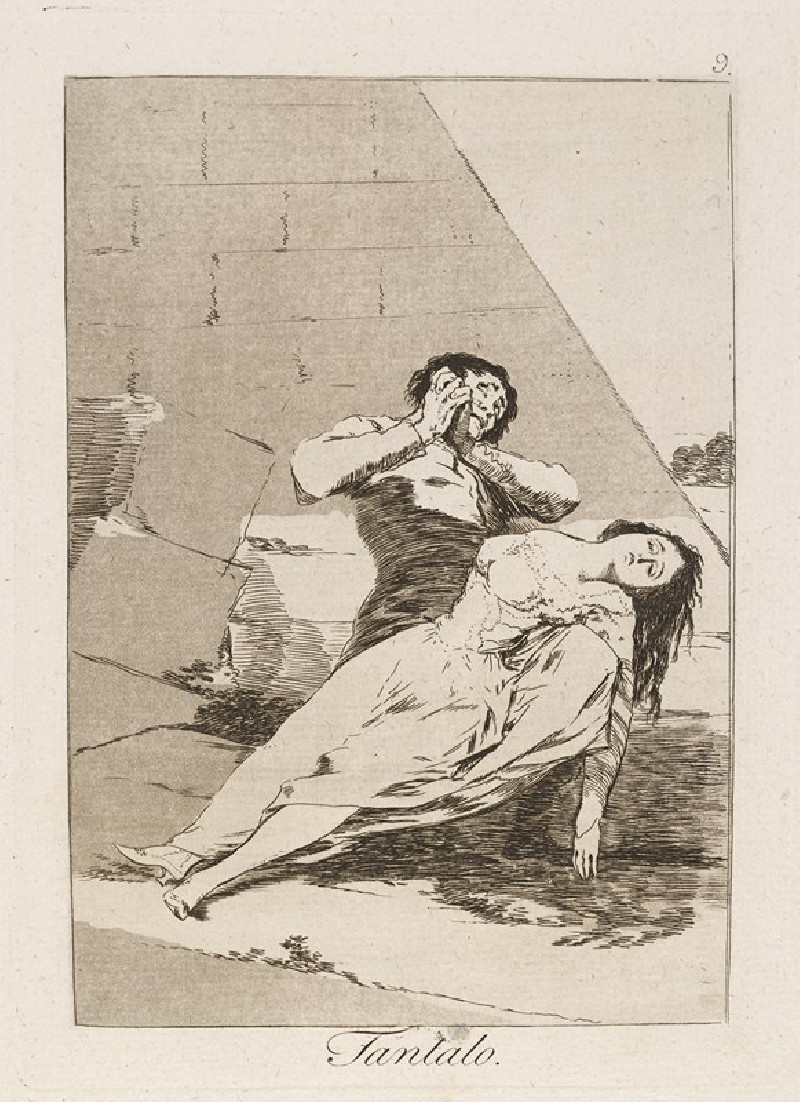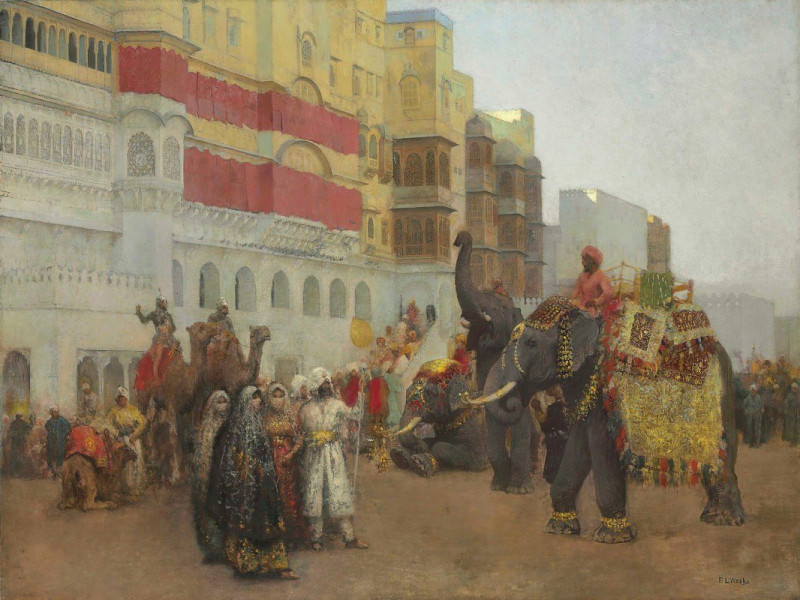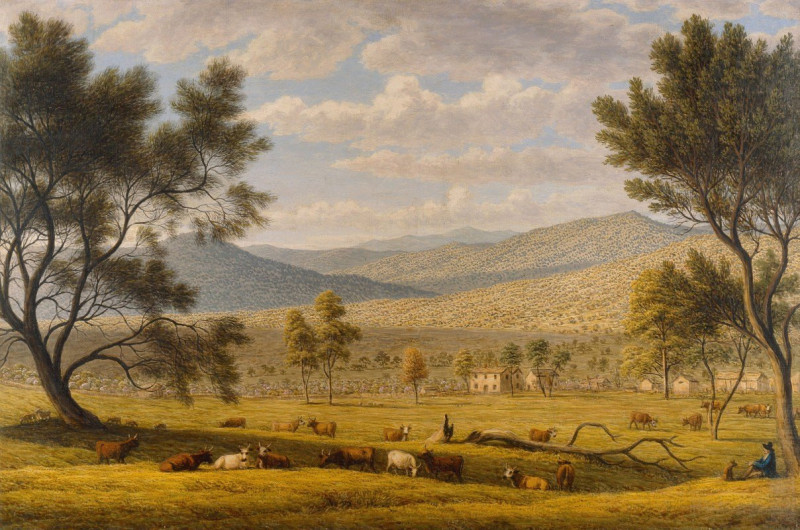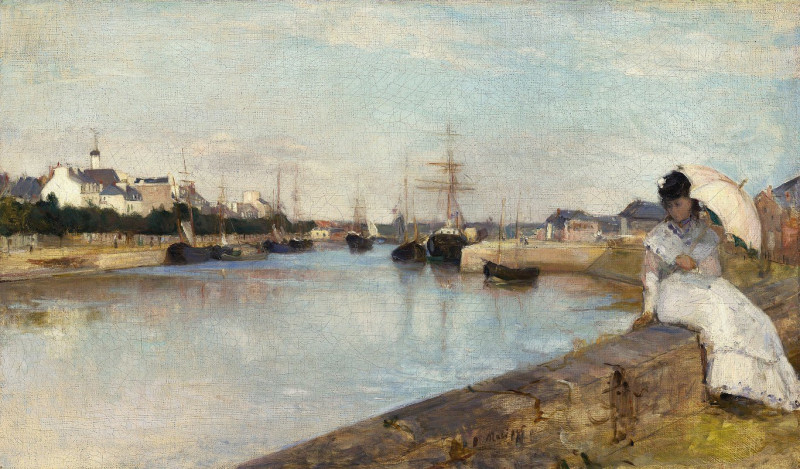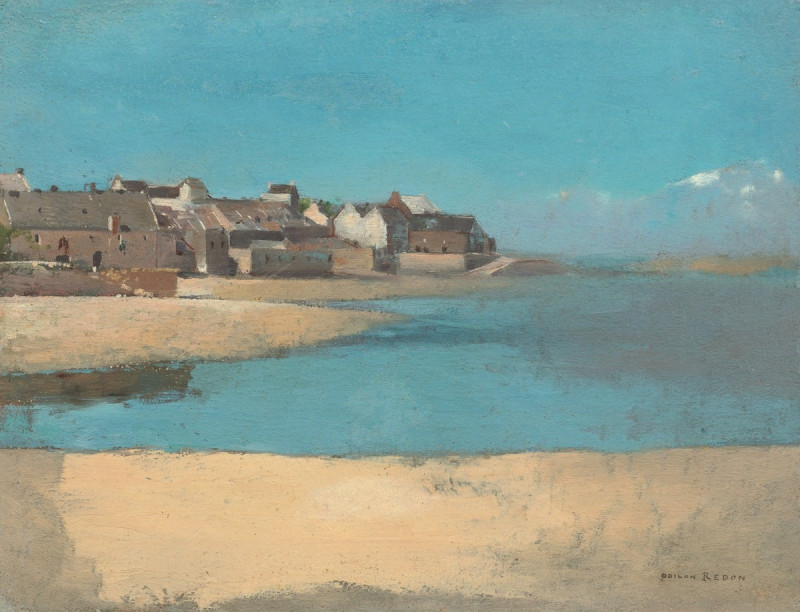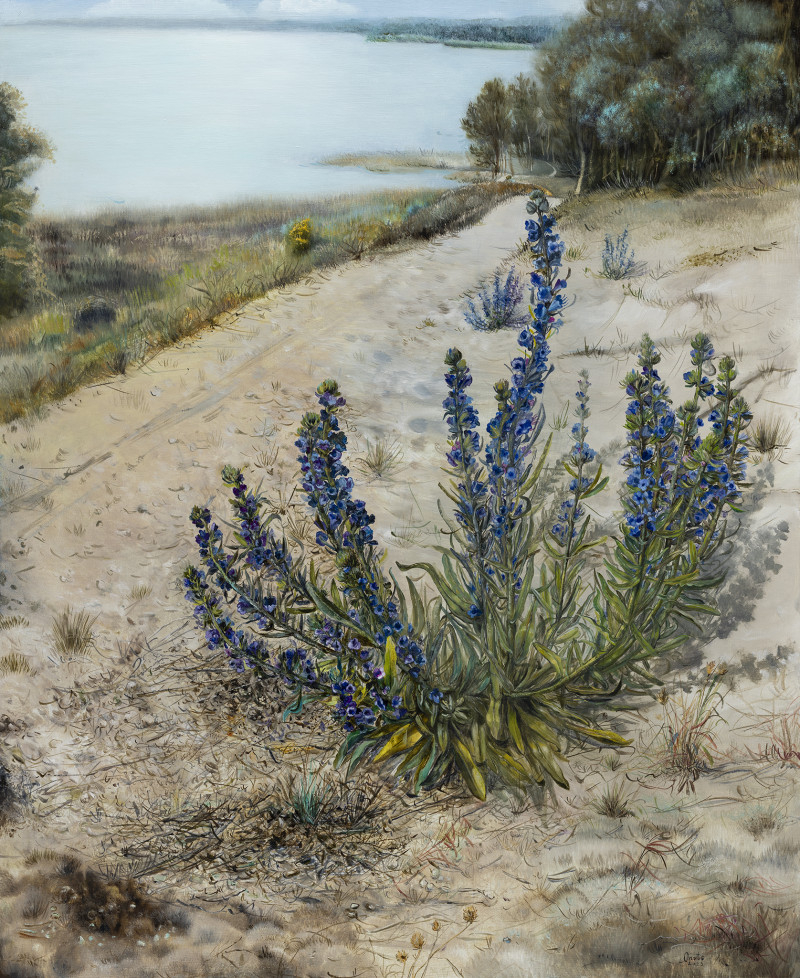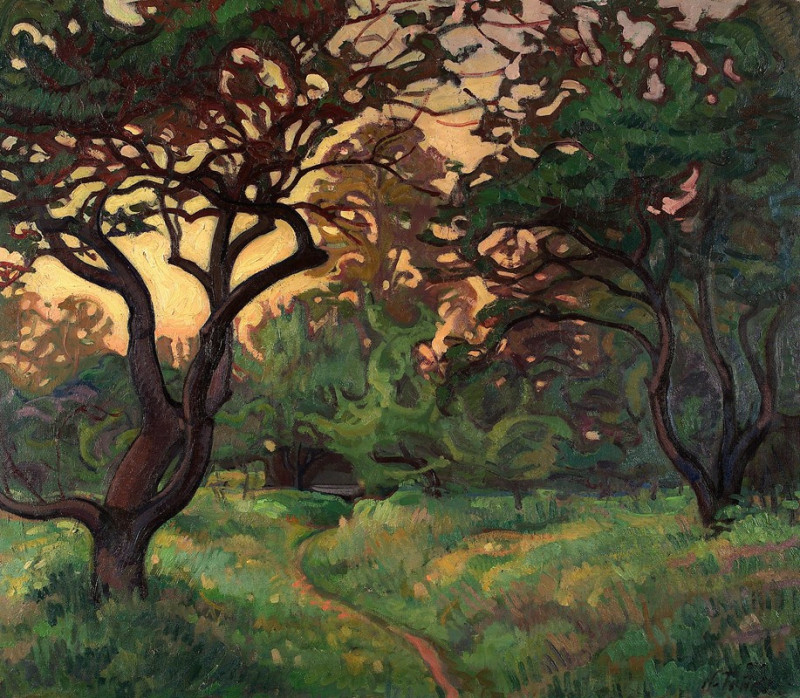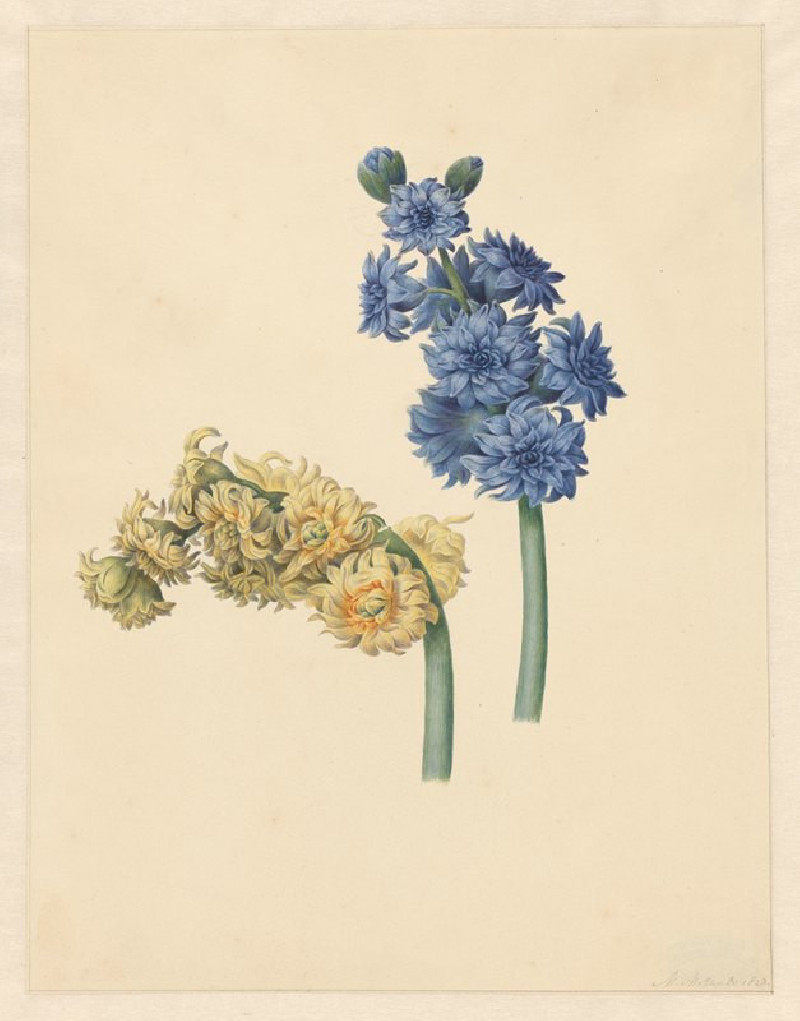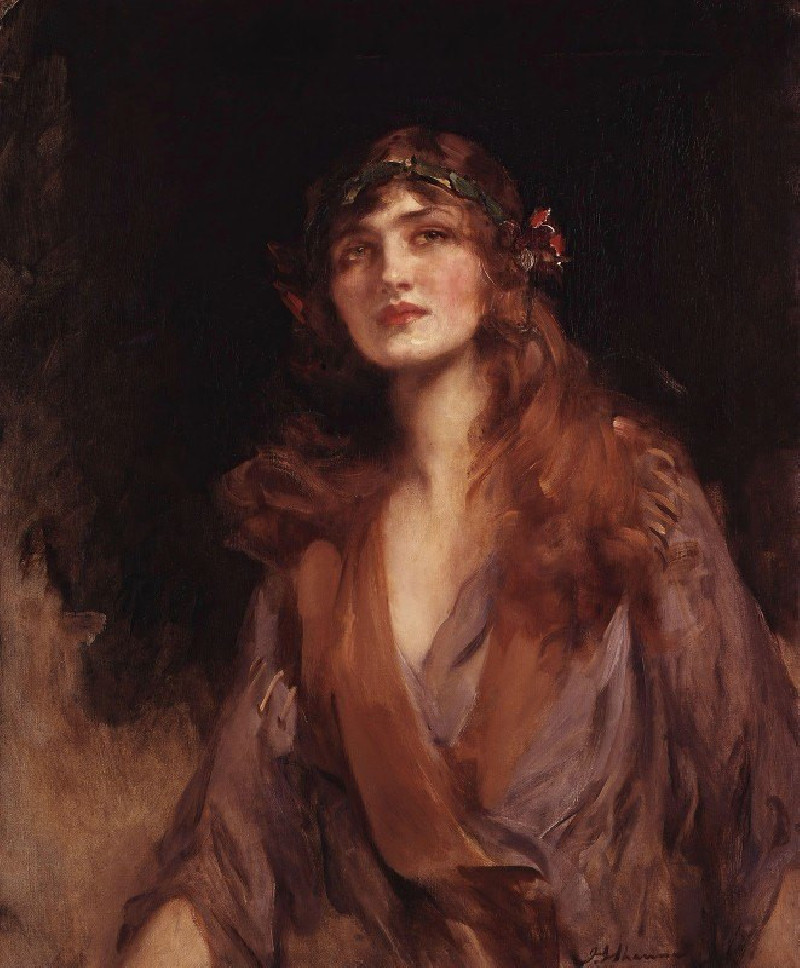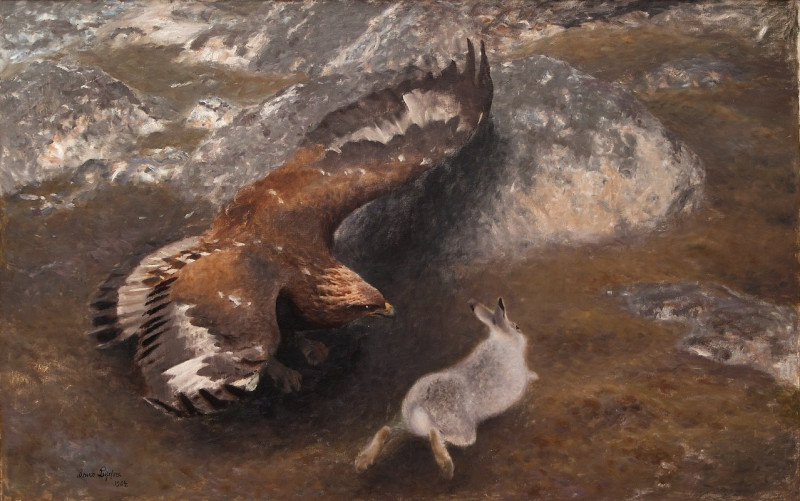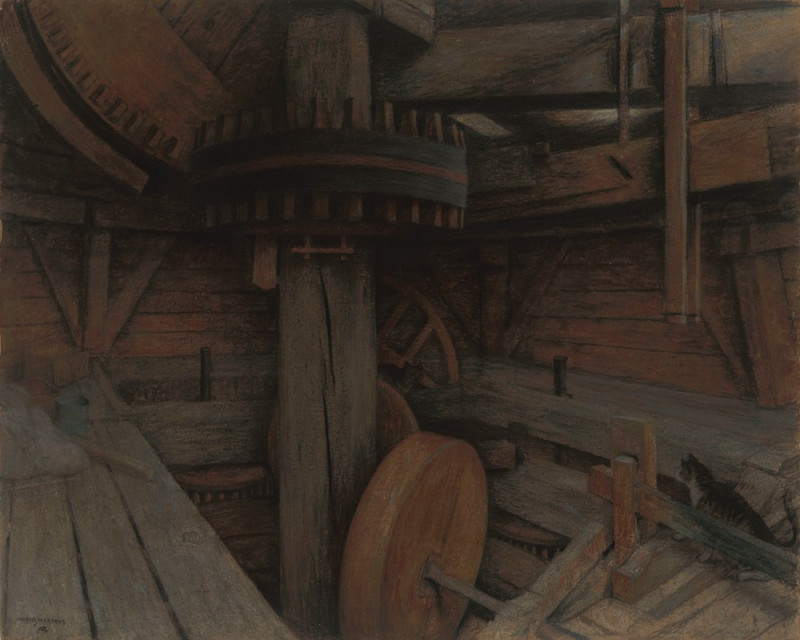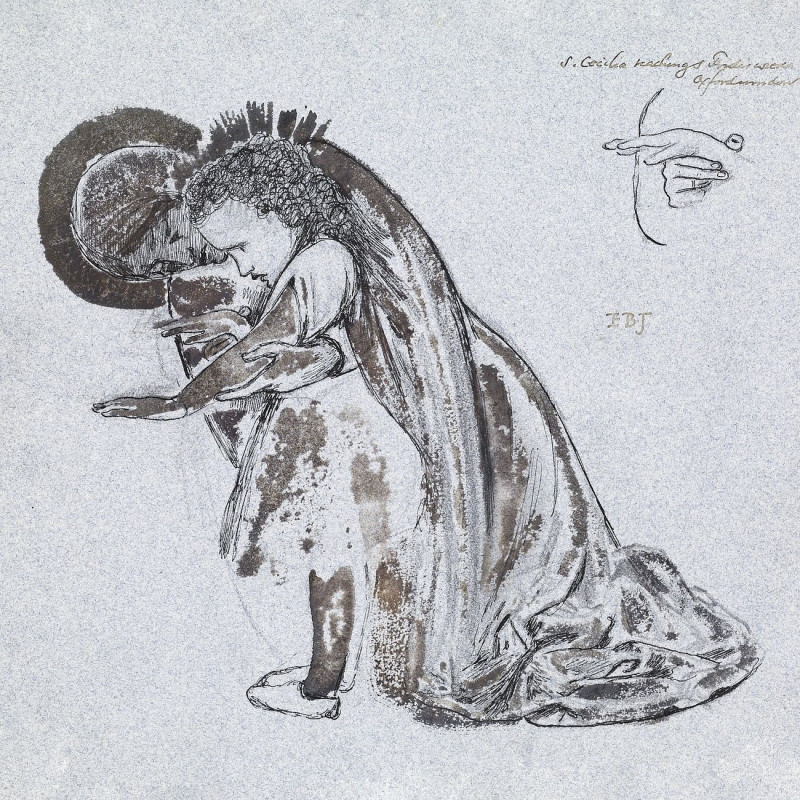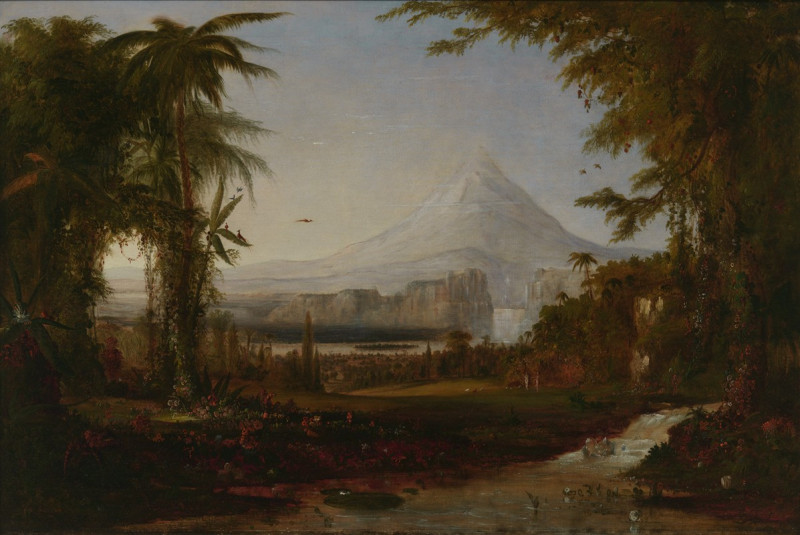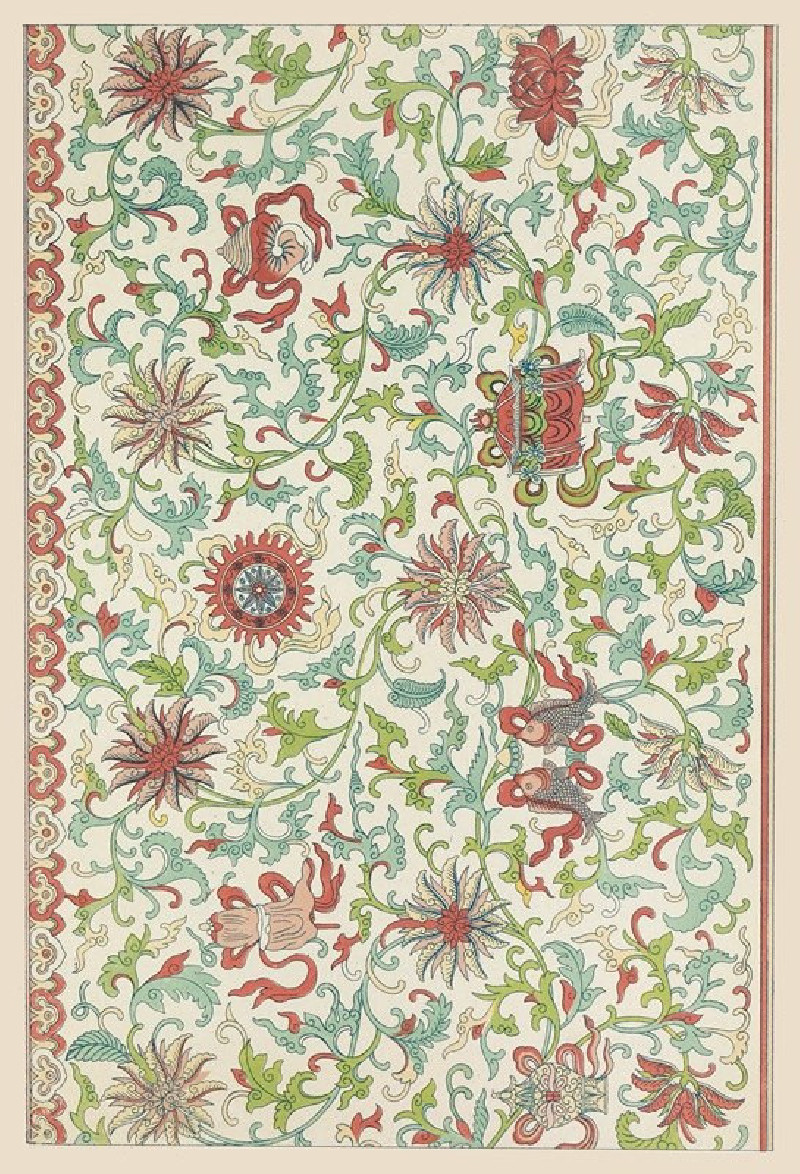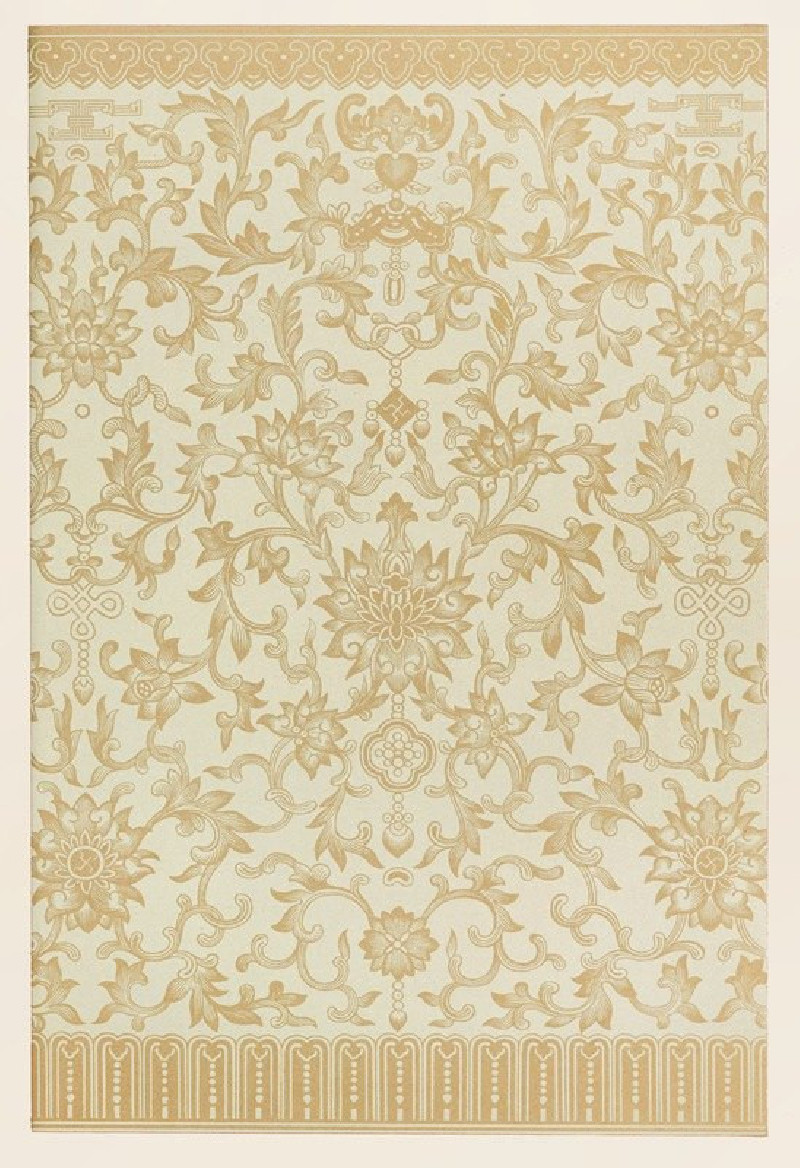Hasta la muerte. (Until death.) (1796-1797)
Technique: Giclée quality print
Recommended by our customers
More about this artwork
Francisco de Goya, a profound and often introspective artist, presents an evocative scene in his artwork "Hasta la muerte" (Until Death), crafted during 1796-1797. This etching, part of his famous series that delves deep into human nature and societal commentary, portrays a vivid tableau that investigates themes of aging, vanity, and the relentless passage of time.The composition showcases an elderly woman seated in front of a mirror, desperately clutching at the vestiges of her once-celebrated beauty. She is garbed in a white, flowing gown and decorates herself with a large, elaborate floral bouquet on her head, a poignant contrast to her aged face. The direct engagement with the mirror, accompanied by her expression and posture, underscores a deep-seated denial of her current state.Observing her are two young men, whose expressions and body language suggest both a mix of amusement and pity. They embody the societal gaze, and possibly the whispers of mortality that shadow her performative facade. This trio's dynamic invites viewers to ponder the superficial value often ascribed to physical appearance and the cruelty of time that spares no one.Behind the main figure, an easel holds a drawing of a demonic figure, adding a layer of dark humor or perhaps symbolizing the inner demons of vanity or fear of death. This element serves as a stark reminder of the inevitable decay all humans face, contrasting sharply with the elderly woman’s futile attempts to preserve her youth."Hasta la muerte" exemplifies Goya's ability to weave complex narratives through his sharp, satirical lens, providing a timeless reflection on human vanity and the universal condition of aging.
Delivery
Returns
Francisco José de Goya y Lucientes (30 March 1746 – 16 April 1828) was a Spanish romantic painter and printmaker. He is considered the most important Spanish artist of the late 18th and early 19th centuries. His paintings, drawings, and engravings reflected contemporary historical upheavals and influenced important 19th- and 20th-century painters. Goya is often referred to as the last of the Old Masters and the first of the moderns.

